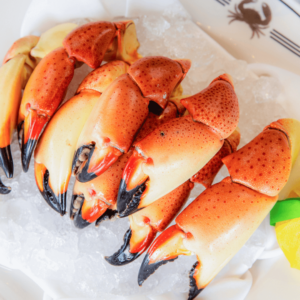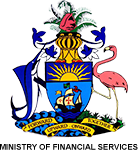Florida Stone Crabs Inc. building $45 million aquaculture project in GB
5 Nov 2025
 The development will be located on a 1,500-acre site near Dover Sound
The development will be located on a 1,500-acre site near Dover Sound
A new aquaculture venture for Bahamian stone crabs in Grand Bahama is set to have a total investment spend of $45 million over two phases.
Carlos Freyre, a principal with Florida Stone Crabs Inc., responded to Guardian Business queries by email about the company’s aquaculture project slated for Grand Bahama.
According to Freyre, because the Florida stone crab is native to both the US East Coast and The Bahamas, that makes Grand Bahama a “naturally suitable environment” for aquaculture.
“The species thrives when given adequate space, consistent feeding, and proper shelter. The stable salinity, temperature, and water-exchange conditions in Grand Bahama provide an ideal setting for sustainable, land-based farming,” he said.
The development will be located on a 1,500-acre site east of Dover Sound on land jointly-owned by the Grand Bahama Development Company (DevCO) and Grand Bahama Port Authority (GBPA) affiliate, Port Group Ltd.
There will be two phases, with the first phase being a $15 million pilot phase, and then a commercial phase that will see a spend of $30 million.
“While specialized equipment will be imported, a significant share of total expenditure, including construction, operations, and staffing, will remain within The Bahamas,” said Freyre.
The initial pilot stage will cover just 36 acres, and feature a hatchery canal, hatchery and seawater trench system. Some 14 trenches, around 4,000 feet in length and 392 feet wide, will be dug and are expected to produce 168,000 stone crabs over a two-year period.
He added: “At full commercial scale, the operation will employ approximately 120 Bahamian staff across hatchery, grow-out, processing, logistics, and administrative divisions. Because aquaculture, especially for stone crabs, is new to The Bahamas, the initial research and technical oversight will draw on experienced international scientists. However, our long-term goal is full local capacity. A structured training and exchange program will ensure that Bahamian scientists, technicians, and managers take over operations as quickly as practicable.”
The stone crab farming method can be replicated on other Family Islands, Freyre said, provided that the sites meet the required spatial, hydrological, and environmental conditions.
“Adequate space and water-quality parameters are essential to accommodate the species’ territorial behavior and maintain high welfare and productivity standards,” Freyre said.
According to him, while aquaculture is new to The Bahamas, it is not new to farming, and Florida Stone Crabs will adhere to the highest ethical standards when farming stone crabs at their facility.
“Ethical and environmental safeguards will be built into every aspect of our operations. It is in our own best interest to ensure that each crab thrives in healthy conditions. This is essential to both animal welfare and product quality,” said Freyre.
Stone crabs have strong export potential across the wider US, Europe, and Asia
He continued: “Crabs are grouped by size to reduce aggression. Water is continuously refreshed to maintain quality, and the trenches are monitored 24 hours a day. Feeding and physical inspections are conducted regularly. There will also be strict regulatory oversight and the facility will operate under the Bahamas Fisheries Act (2020) and the Environmental Planning and Protection Act (2020), which require an environmental clearance certificate and ongoing compliance monitoring by the Department of Environmental Planning & Protection (DEPP).
“Florida Stone Crabs, Inc. is aligning with GLOBALG.A.P. IFA v6 for Aquaculture, an internationally recognized, GFSI-benchmarked certification covering animal welfare, worker safety, biodiversity, feed integrity, hygiene, and traceability.
“There are additional frameworks for the project and it, follows the Aquaculture Stewardship Council’s Farm Standard for decapods, the 2024 WOAH (OIE) Aquatic Animal Health Code, and the Seafish 2024 Decapod Welfare Code, all of which emphasize humane handling, responsible farming, and transparent monitoring.
“Together, these measures ensure that ethical standards are not only stated, but independently verifiable.”
Freyre pointed out that the global stone crab market is undersupplied, and wild harvests have declined steadily to about two to 2.5 million pounds per year, with roughly 90 percent consumed in Florida alone. This creates strong export potential across the wider US, Europe, and Asia.
“From a biological perspective, the species is inherently sustainable. After their claws are harvested, crabs are returned to their trenches, where they regenerate new claws within 12 to 27 months before harvest resumes. This regenerative cycle allows continuous production without depleting natural populations.”

